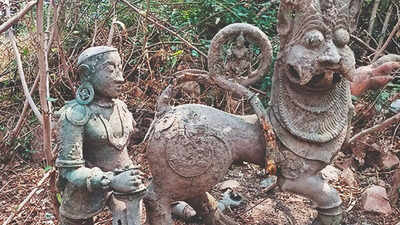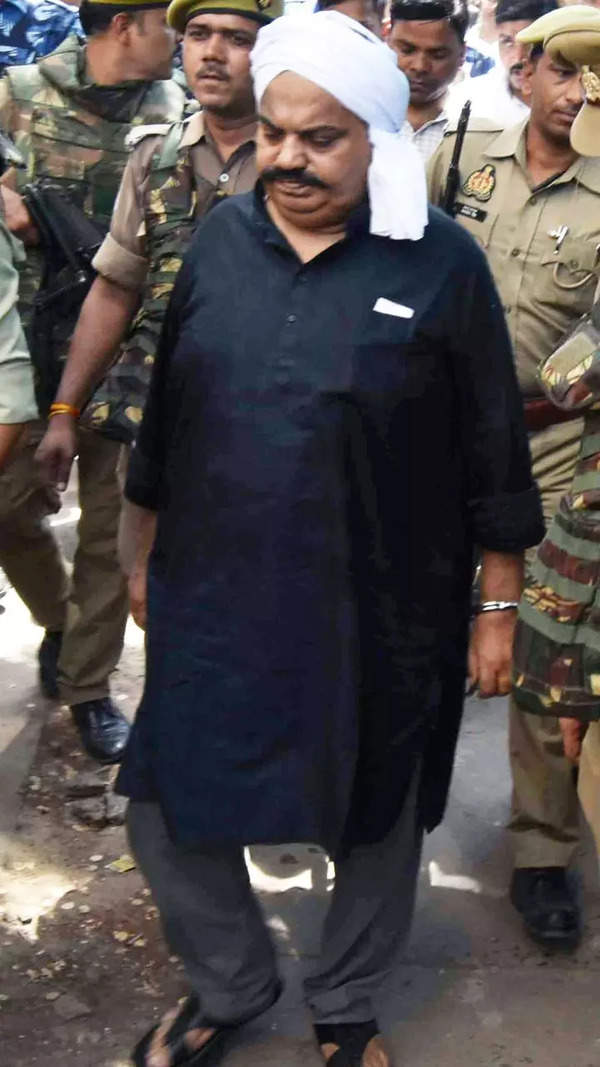- News
- City News
- hubballi News
- Rare brass emblem and sculpture of Hoysala dynasty found in Karnataka's Belagavi village
Trending Topics
Rare brass emblem and sculpture of Hoysala dynasty found in Karnataka's Belagavi village

BELAGAVI: When farmer Rangappa Holagyar was tilling his farmland last Sunday morning, little did he realise that his name was about to make it to the headlines for a rare ‘discovery’ – entirely by default!
While at work, Holagyar stumbled upon rare brass sculptures bearing the Hoysala dynasty’s emblem – Sala (the king) and a lion.
Soon after the discovery, the humble location of Hooli village suddenly turned into a hotspot of sorts, with historians, researchers and even curious villagers making a beeline for Holagyar’s farm in Belagavi district to take a closer look at the unique artefacts.
This is the first time that an emblem of this size belonging to the Hoysala dynasty has been unearthed in Karnataka.
The lion carving found on the emblem is 90cm wide and 70cm tall. Some sculptures bearing the Hoysala emblem had been found earlier in Basavakalyan, but they were much smaller than the latest one.
According to historians, based on their stylistic aspects, these sculptures are believed to be from 12th-13th century AD.
Chemical test for future research
A team of officials from Archaeological Survey of India (ASI), Dharwad, including deputy superintendent HS Desai, assistant superintendent SM Devaraj and senior archaeologist RM Shadakshariah visited the spot and took possession of the brass engravings. Senior researchers IK Patter and Surebhan were also part of the team.
According to Desai, both the sculptures would be cleaned and chemically tested for further research.
Sharing details about the sculptures with TOI, Shadaksharaiah said in terms of its anatomical features, the lion is rare. Its tail curling into a circle on the upper part of its body is quite unique.
“When it comes to the face, it looks ferocious with big eyeballs, open mouth and the tongue touching the upper part of the jaw. The lion can be seen in a standing posture, with one leg crushing an elephant,” Shadaksharaiah added.
While the lion has been assembled in five parts, the sculpture bearing Sala is in four parts,” the senior archaeologist said.
The Hoysala emblem used to be considered as something auspicious and a mark of bravery. According to historians, many other dynasties, such as the Yadavas, also preferred a similar emblem, usually installed on the upper part of temple facades.
Researchers want to keep the sculptures as exhibits in one of the bigger museums, so that historians can do a detailed study and also to allow visitors to witness them from close quarters.
While at work, Holagyar stumbled upon rare brass sculptures bearing the Hoysala dynasty’s emblem – Sala (the king) and a lion.
Soon after the discovery, the humble location of Hooli village suddenly turned into a hotspot of sorts, with historians, researchers and even curious villagers making a beeline for Holagyar’s farm in Belagavi district to take a closer look at the unique artefacts.
This is the first time that an emblem of this size belonging to the Hoysala dynasty has been unearthed in Karnataka.
The lion carving found on the emblem is 90cm wide and 70cm tall. Some sculptures bearing the Hoysala emblem had been found earlier in Basavakalyan, but they were much smaller than the latest one.
According to historians, based on their stylistic aspects, these sculptures are believed to be from 12th-13th century AD.
Chemical test for future research
A team of officials from Archaeological Survey of India (ASI), Dharwad, including deputy superintendent HS Desai, assistant superintendent SM Devaraj and senior archaeologist RM Shadakshariah visited the spot and took possession of the brass engravings. Senior researchers IK Patter and Surebhan were also part of the team.
According to Desai, both the sculptures would be cleaned and chemically tested for further research.
Sharing details about the sculptures with TOI, Shadaksharaiah said in terms of its anatomical features, the lion is rare. Its tail curling into a circle on the upper part of its body is quite unique.
“When it comes to the face, it looks ferocious with big eyeballs, open mouth and the tongue touching the upper part of the jaw. The lion can be seen in a standing posture, with one leg crushing an elephant,” Shadaksharaiah added.
While the lion has been assembled in five parts, the sculpture bearing Sala is in four parts,” the senior archaeologist said.
The Hoysala emblem used to be considered as something auspicious and a mark of bravery. According to historians, many other dynasties, such as the Yadavas, also preferred a similar emblem, usually installed on the upper part of temple facades.
Researchers want to keep the sculptures as exhibits in one of the bigger museums, so that historians can do a detailed study and also to allow visitors to witness them from close quarters.
Start a Conversation
FOLLOW US ON SOCIAL MEDIA
FacebookTwitterInstagramKOO APPYOUTUBE










